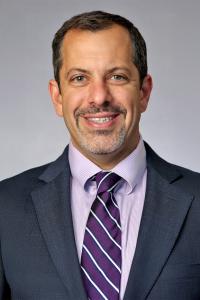April is Safety in Spine Surgery Month
April 2022 marks the second annual Safety in Spine Surgery Month, an effort to promote engagement and discussion in the medical community about improving safety in spine surgery by establishing guidelines and sharing best practices.
The event highlights the work of the Safety in Spine Surgery Project (S3P), an organization created in part by Michael G. Vitale, MD, Columbia Orthopedics chief of pediatric spine and scoliosis surgery and co-author of the book titled “Safety in Spine Surgery: Transforming Patient Care and Optimizing Outcomes.”
S3P was developed to support the annual Safety in Spine Surgery Summit. Since 2016, these summits have brought together leaders and stakeholders in spine surgery to focus the conversation on improving the safety and sustainability of spine surgery. “The goal is more discussion around concepts like recognition of best practices, decreasing variability, the importance of teams, the importance of culture,” says Dr. Vitale. “Those are essentially the four tenets of modern medical thinking about safety.”
Expanding the Discussion
This year’s Safety in Spine Surgery Month will include the eighth annual Safety in Spine Surgery Summit. Attendees include surgeons, hospital administrators, device makers, insurance company representatives—anyone that can potentially play a role in improving spine surgery safety and outcomes.
And that audience has been growing. “The meeting this year is fully virtual,” explains Dr. Vitale. “We were hybrid in 2020, but we went fully virtual for ‘21 and ‘22. We pivoted to a very strong online social media effort, focused on sharing this discussion around best practices for safety in spine surgery.”
The move to digital has helped expand the reach of the conversation. “The virtual engagement has been amazing,” he says. “In the first 11 days, we’ve had 250,000 engagements. So we're on track for close to a million engagements around this whole effort.”
Working Together
S3P highlights the collaborative nature of improving safety. “For the last eight years, we've developed best practice guidelines using what’s called the Delphi process,” notes Dr. Vitale. This method takes a crowd-sourced approach, gathering input from a group of experts to develop a consensus. S3P has used these recommendations to create a growing list of safety guidelines.
“The areas that we've developed guidance around have been published, and in some cases they were the most highly cited articles of the year,” says Dr. Vitale. S3P has established guidance on topics like preventing infection, avoiding neurological injury, best practices around using halo gravity traction, and avoiding wrong-site surgery (operating on the wrong level of the spine).
S3P also developed guidelines around how to manage so-called “high-risk spine”—including developing a formal definition of what high-risk spine procedures are. Based on those guidelines, the group then created an algorithm to help guide surgeons to achieve the best possible outcomes.
Safety in Spine Surgery Month: Highlighted Events
This year's Safety in Spine Surgery Summit will host two webinars featuring leading experts from around the world. Both webinars will include panel discussions and best paper award presentations and offer an opportunity for members of the community to share experiences, ask questions, and give feedback.
The first webinar, “Best Practice Guidelines and Checklists to Make Your OR Safer,” on Thursday, April 14, will revisit S3P’s initial guidelines for reducing infection. “Our first guidelines were about best practices to avoid surgical site infection,” says Dr. Vitale. “All these years later, we felt that those guidelines needed to be updated and expanded to include treatment, not just prevention.”
The second webinar, “Robotics and Navigation in Spine Surgery: Views Across Generations,” on Thursday, April 21, will examine the role of enabling technologies like robotics, augmented reality (AR), surgical simulation, and 3D preoperative modeling. “The webinar will explore how these technologies have made spine surgery safer, or whether in fact they have,” says Dr. Vitale.
Maintaining Engagement
But webinars and summits are only part of the equation. “We can track the number of people attending a webinar or the number of people engaging in a month, but I think we need to continue to do better,” says Dr. Vitale. “We have to get better at getting better.”
That's where the S3P and events like Safety in Spine Surgery Month come in. “The entire currency of the effort is based on engagement and the dissemination of these ideas,” he says. “The more these ideas drive the discussion, the better off we’ll be: the safer our ORs will get, the safer our surgeons will get, and the better our outcomes will be.”
To learn more about S3P or to register for upcoming webinars, please visit:
